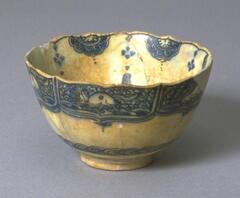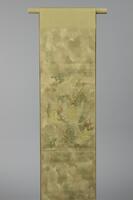43 UMMA Objects
43 UMMA Objects

French (French (culture or style))
Brocaded Silk
1770 – 1780
The Paul Leroy Grigaut Memorial Collection
1972/2.244
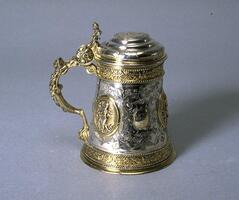
German
Tankard with Lid and scenes of Judith, Lucretia, and Venus
1600 – 1639
Museum Purchase
1966/2.18

Chinese (Chinese (culture or style))
Ivory Snuff Bottle
1912 – 1949
Gift of Mr. Robert W. Coggan
1980/2.71
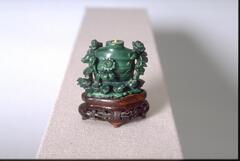
Chinese (Chinese (culture or style))
Malachite ornamental snuff bottle
1912 – 1949
Gift of Mr. Robert W. Coggan
1980/2.42
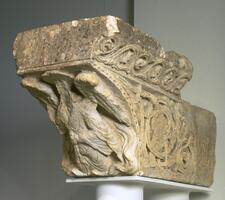
French (French (culture or style))
Console with bird in vine scroll, rinceau, and angel
1150 – 1175
Museum Purchase
1975/1.64

Chinese (Chinese (culture or style))
Jasper snuff bottle
1912 – 1949
Gift of Mr. Robert W. Coggan
1980/2.25
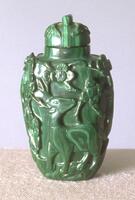
Chinese (Chinese (culture or style))
Malachite snuff bottle
1912 – 1949
Gift of Mr. Robert W. Coggan
1980/2.50
![This is a grayish brown small jar with a short neck and a globular body. It is dated to the end of the 19th century, judging from its motifs, color of cobalt-blue and shape. It is decorated with a line around the rim and with floral scrolls on the shoulder. The entire foot is glazed and has grains of coarse sand stuck to it. Extensive contamination from impurities on its surface has given it a yellow tint overall.<br />
[Korean Collection, University of Michigan Museum of Art (2014) p.174] This is a grayish brown small jar with a short neck and a globular body. It is dated to the end of the 19th century, judging from its motifs, color of cobalt-blue and shape. It is decorated with a line around the rim and with floral scrolls on the shoulder. The entire foot is glazed and has grains of coarse sand stuck to it. Extensive contamination from impurities on its surface has given it a yellow tint overall.<br />
[Korean Collection, University of Michigan Museum of Art (2014) p.174]](/media/W1siZiIsIjIwMjIvMDkvMjQvN29kYzJkdGp4d19kZWZhdWx0LmpwZyJdLFsicCIsInRodW1iIiwiMjQweDIwMCJdXQ?sha=603bd4d6c7b5b184)
Korean (Korean (culture or style))
Small Blue-and-White Jar with Bamboo Design, misfired
19th century
Gift of Bruce and Inta Hasenkamp and Museum purchase made possible by Elder and Mrs. Sang-Yong Nam
2004/1.277

Chinese (Chinese (culture or style))
Snuff bottle with blue floral sprays under green glaze
1912 – 1949
Gift of Mr. Robert W. Coggan
1980/2.111

Chinese (Chinese (culture or style))
Agate snuff bottle
1900 – 1949
Gift of Mr. Robert W. Coggan
1980/2.18
Loading…
